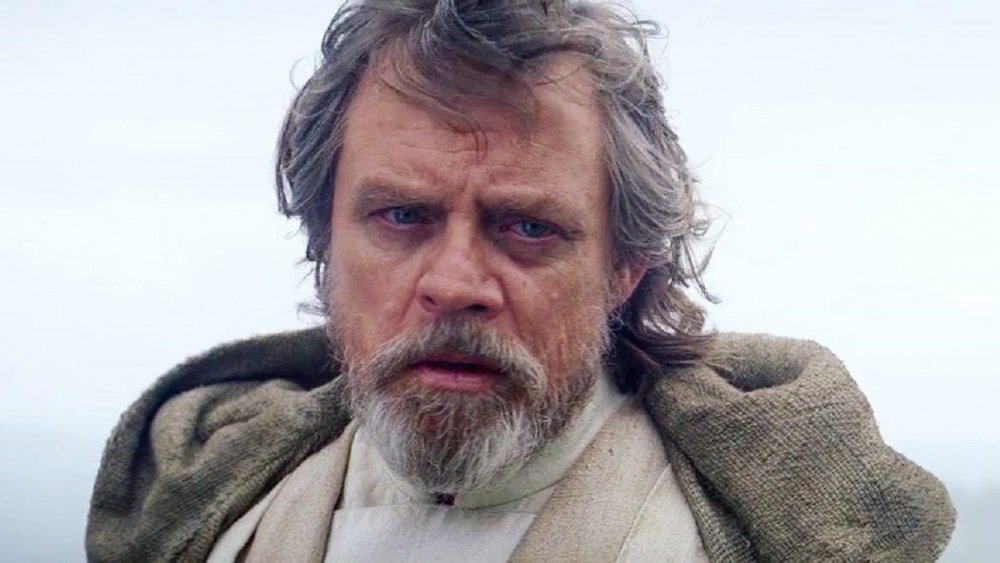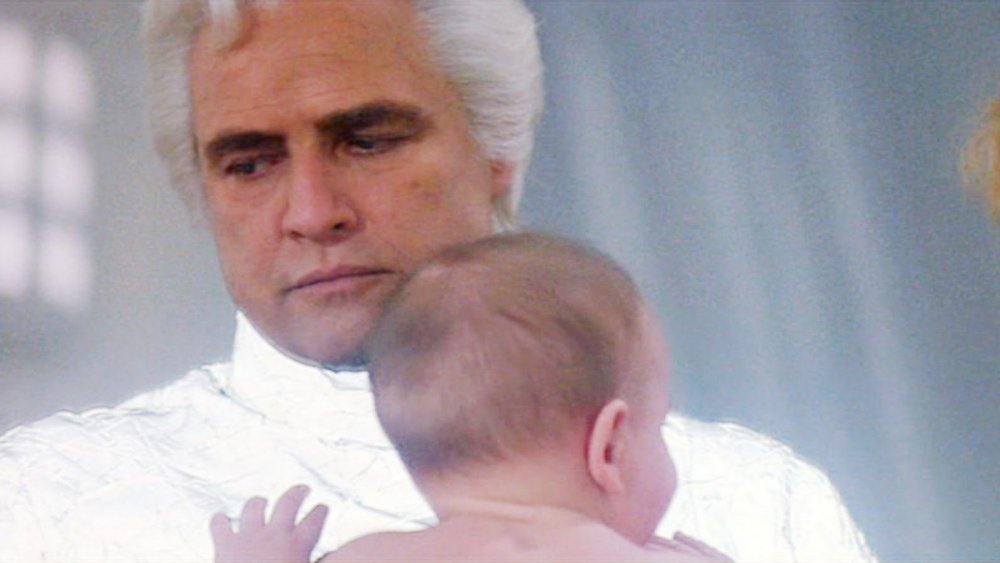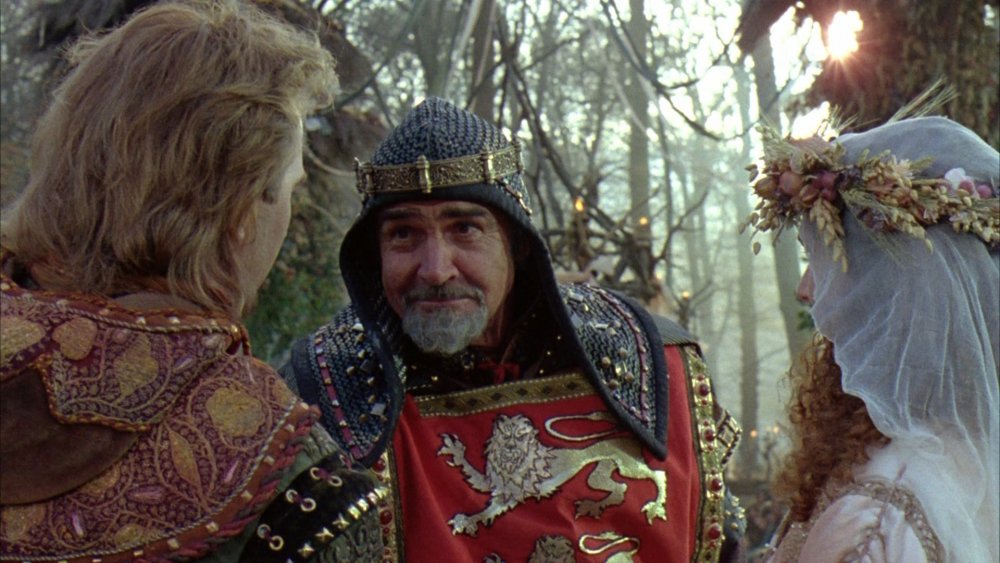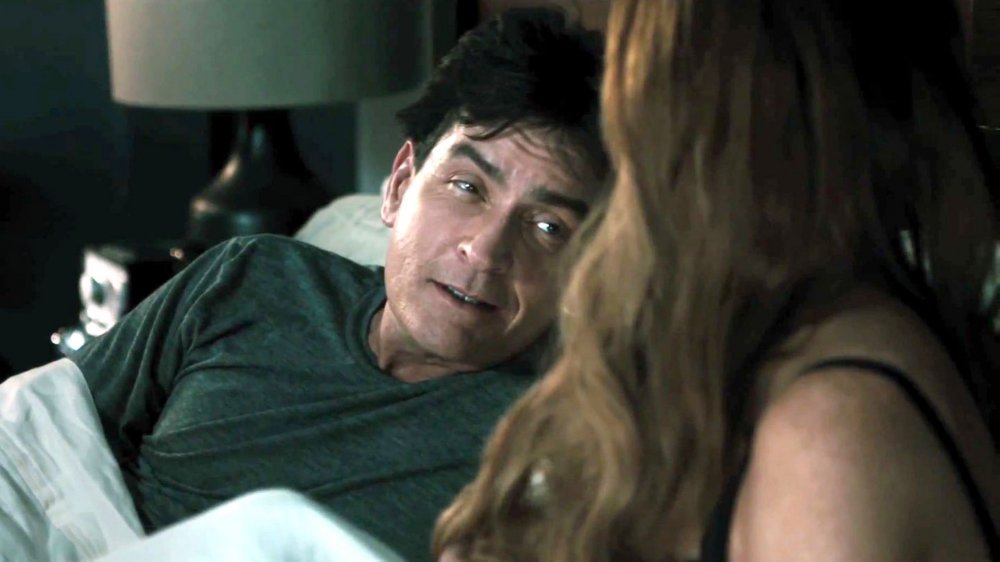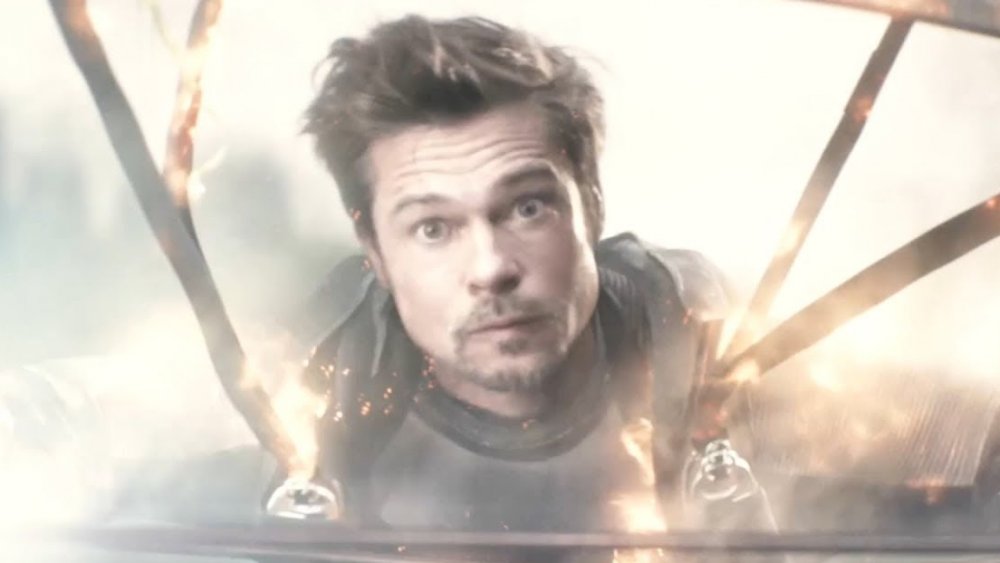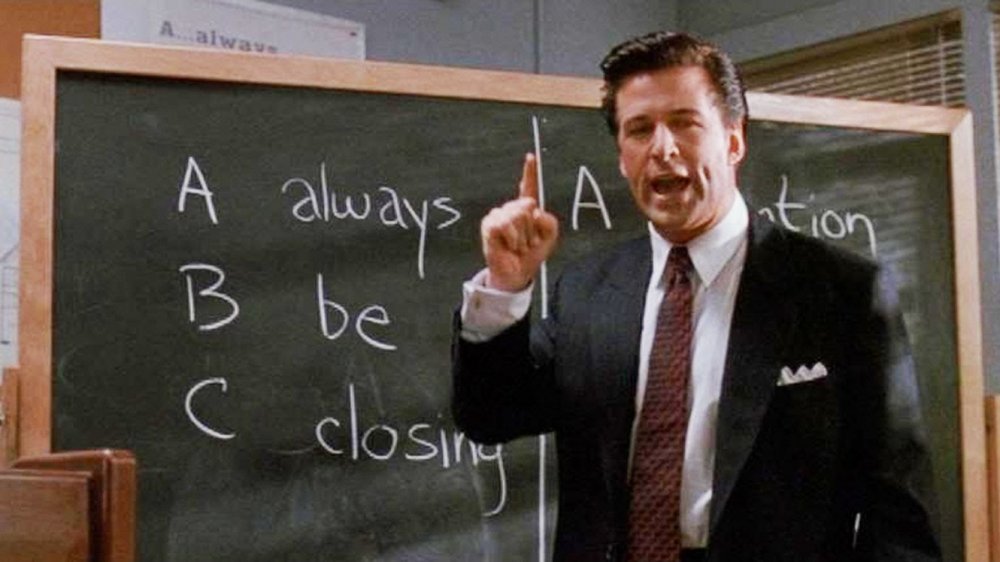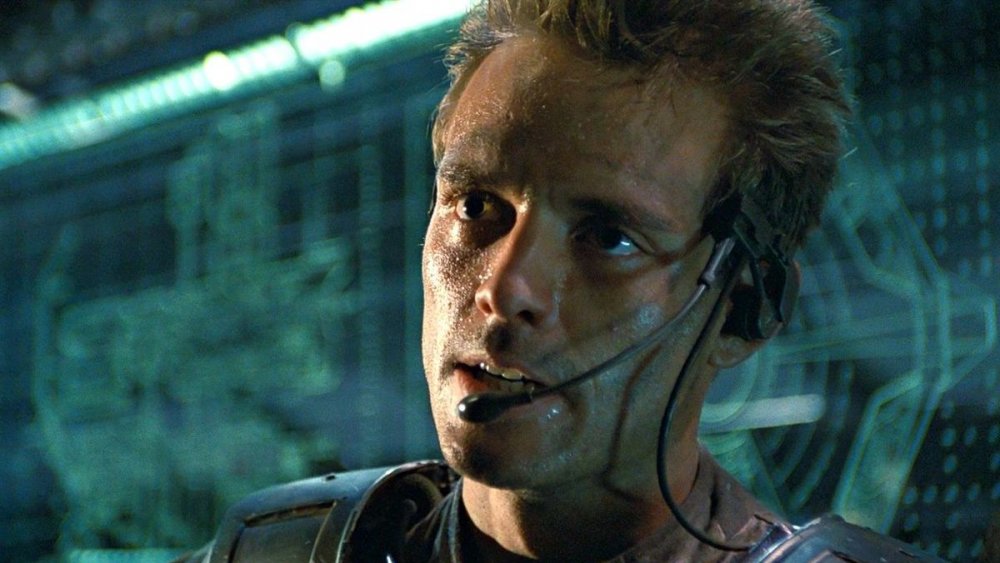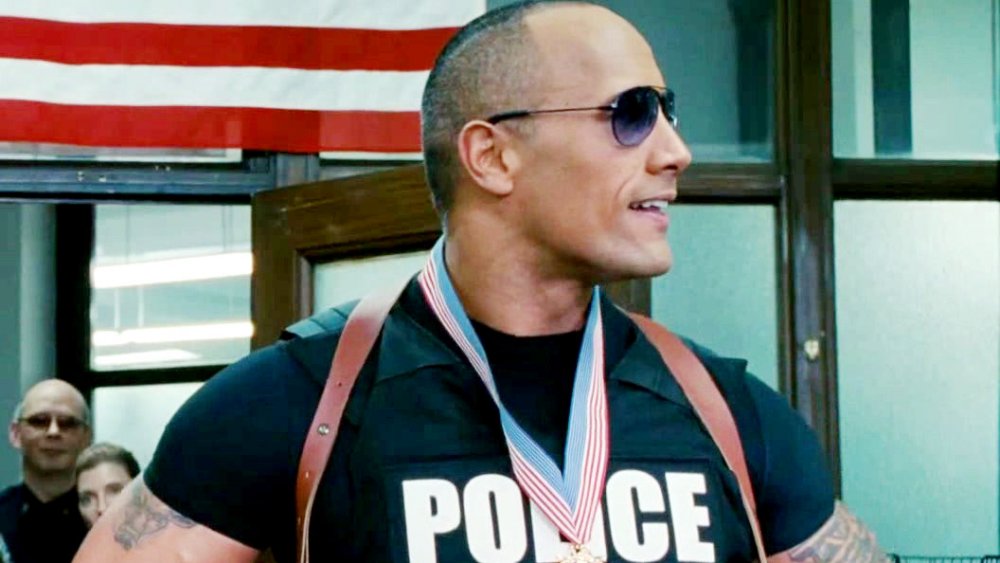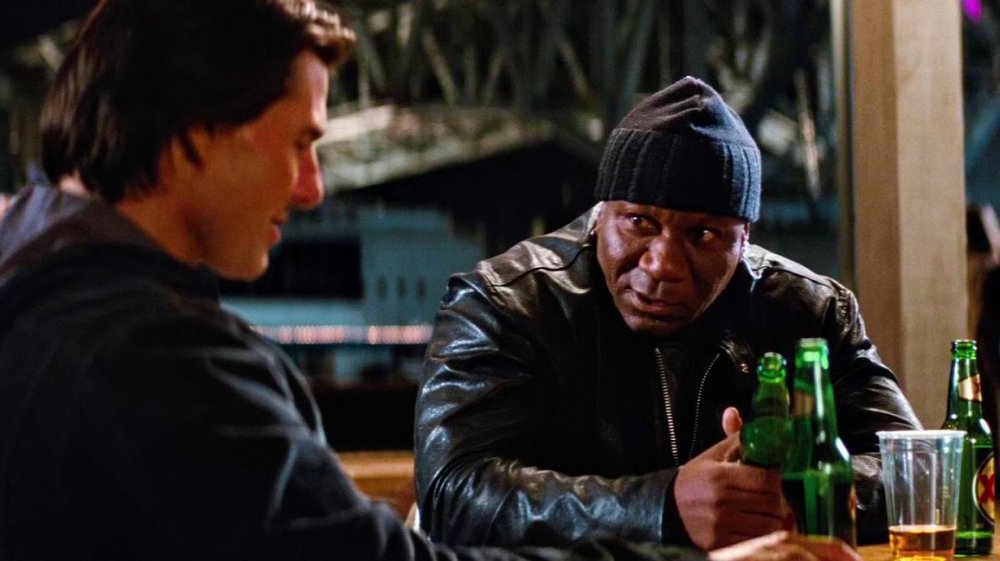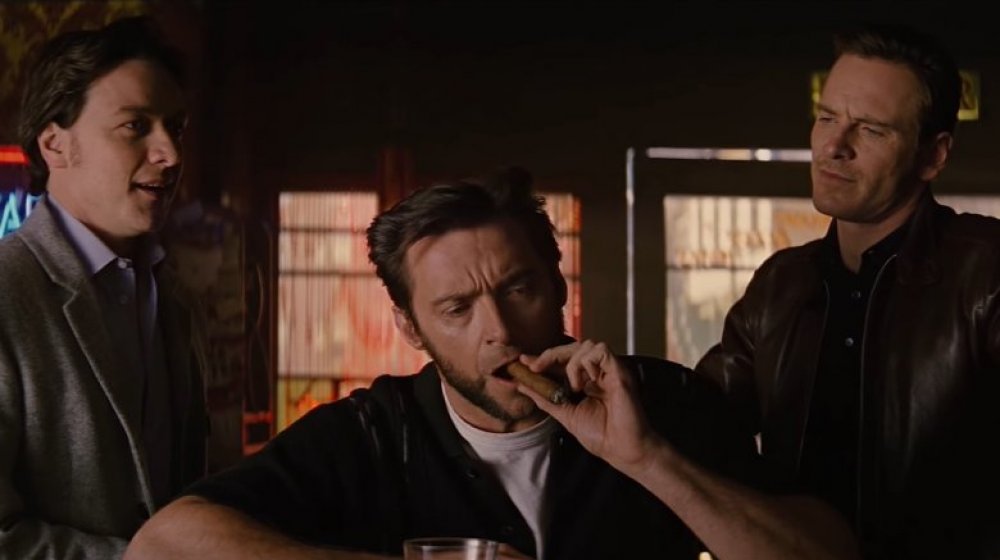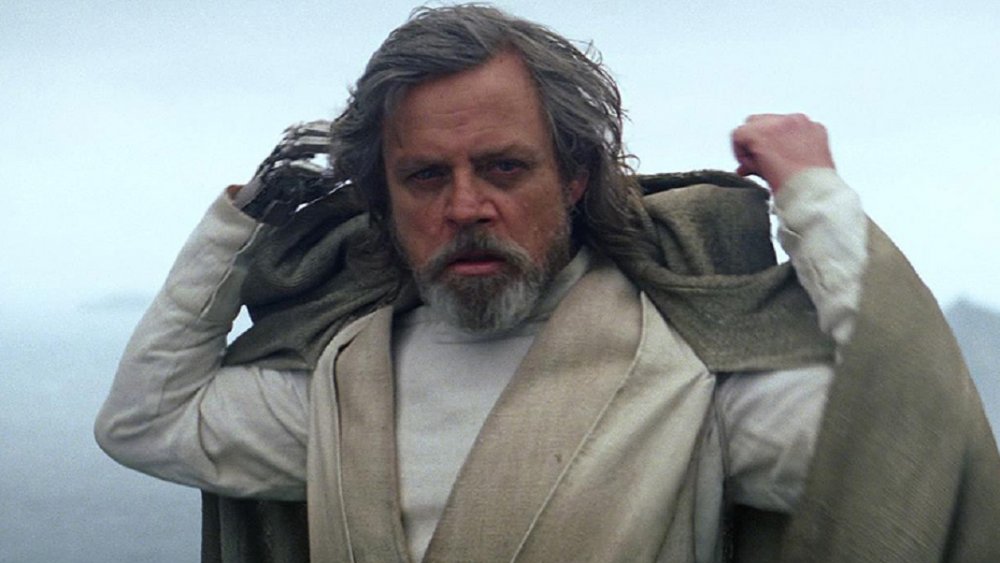The Most Expensive Celebrity Cameos Ever
Movies have been part of the collective culture for over a century now, and audiences are so used to the conventions of the form that a movie can easily take a turn into the predictable or the dull. Filmmakers know this, and they've got a whole set of tools they can use to recapture the audience's attention in a fun way. And one of those techniques is the cameo.
Is it a little corny when a famous face pops up unexpectedly in a big movie, injecting a little bit of fun for the few minutes (or even seconds) they're on the screen? Absolutely. But are cameos endlessly entertaining and a fun little treat for viewers? That's also a fact.
It's a science and an art to execute the perfect cameo, and the people who make movies know this. That's why they're willing to fork over big bucks to big stars who won't even appear on camera for all that long. But just how much are they willing to shell out to get a famous figure? Well, if you're curious about those paychecks, here are the most expensive celebrity cameos ever.
Marlon Brando made a killing off his Superman cameo
There were few actors in Hollywood more highly regarded in the 1970s than Marlon Brando. He won his second Academy Award for his fascinating portrayal of Don Corleone in 1972's The Godfather, which also won the Best Picture Oscar and proved to be a blockbuster box office hit. Brando's performances projected a captivating air of authority, so when producers put together the first ever big-budget Superman movie, he was a logical pick to play Jor-El, father of young Kal-El, the alien baby who heads to Earth upon the destruction of the planet Krypton and becomes the Man of Steel.
In fact, the makers of Superman: The Movie wanted Brando so bad that they were willing to meet his outlandish and oversized demands for the actor to make what ultimately amounts to a cameo. Brando appears as the wise and tranquil Jor-El for about ten minutes (out of the films 143-minute running time), but he received top billing, over both Christopher Reeve (portraying the film's titular character) and Oscar winner Gene Hackman (as Lex Luthor). For that small amount of work, Brando earned an upfront appearance fee of $3.7 million, and he also negotiated a percentage of the movie's profits. In the end, Brando got about $19 million for his cameo.
Sean Connery's appearance in Robin Hood: Prince of Thieves was pretty expensive
The story of Robin Hood and his Merry Men who steal from the rich and give to the poor, all while avoiding the clutches of the wicked Sheriff of Nottingham, is one of the oldest and most familiar in the English language. It's also in the public domain, meaning filmmakers don't have to buy any rights or pay any royalties to its creators. For those two reasons, Robin Hood is frequently committed to film, and in 1991 a new take on the tale starring of-the-moment mega-star Kevin Costner included a reference to a very popular previous iteration.
Robin Hood: Prince of Thieves ends happily, with Robin Hood (Costner) and his one true love, Lady Marian (Mary Elizabeth Mastrantonio), reuniting for a forest wedding after the bad guys are thwarted. However, there's a surprise guest at the nuptials — King Richard, who gives his blessing to the couple and his thanks to Robin for his heroism. Richard is portrayed by an uncredited Sean Connery, who also starred in the 1976 film Robin and Marian, playing the titular bandit.
And how much did he make for his brief appearance? Well, the facts are a bit up in the air. According to the Orlando Sentinel, Connery made a whopping $500,000 for his cameo. However, according to biographer Richard Yule, he "only" made $250,000 for delivering four lines. But either way, Connery didn't keep the cash. Instead, the acclaimed Scottish actor donated his entire paycheck to charity.
Charlie Sheen earned a scary amount of money for this comedy flick
Nowadays, Charlie Sheen is associated more with scandal than he is with any acting work. His very public, drug-fueled meltdown in 2011 included the declaration that "tiger blood" ran through his veins, a profane tirade against his Two and a Half Men boss Chuck Lorre, and his firing from the show. Before that, Sheen was simply a Hollywood bad boy and a bankable one at that, the highest paid actor on TV (earning about $2 million per episode) and a worthwhile investment for movie producers, too.
So it makes sense that Sheen starred in three installments of the Scary Movie parody film franchise. In the Signs-skewering Scary Movie 3, he had a lead role as farmer Tom Logan, which he reprised in a smaller capacity in Scary Movie 4. Sheen then returned for Scary Movie 5, but confusingly, not as Tom Logan. Instead, he showed up as "Charlie Sheen." In the beginning of the film, Sheen and fellow tabloid magnet Lindsay Lohan (playing herself) team up to make an absurd celebrity sex tape. It ends when a ghost possesses Lohan and violently kills Sheen (who, on-screen text explains, kept partying for several days after his death).
According to TMZ, Sheen earned $250,000 for his one day of work on Scary Movie 5. Then he paid it forward, donating $150,000 of it to charities selected by the film's creative team and the $100,000 left over to Lohan, ostensibly to help her pay down an enormous tax debt.
Brad Pitt's cameo in Deadpool 2 cost more than you might think
Superhero team-up movies are a fairly new phenomenon, and they can get a pretty high volume of movie stars onto a screen at the same time. Witness the star power of Avengers: Endgame, Justice League, or even Deadpool 2.
The hilarious superhero sequel finds the titular "merc with a mouth" form the X-Force, a squad of heroes with powers both impressive and specific. Reynolds stars as Deadpool, who possesses rapid healing abilities, and he's joined by Zazie Beetz as the luck-harnessing Domino, along with Zeitgeist (Bill Skarsgard), Bedlam (Terry Crews), and Peter (Rob Delaney). Those appearances are short, but the contribution of Brad Pitt as Vanisher is even shorter.
Yes, the incredibly famous and recognizable movie star pops up in Deadpool 2 — but he's easy to miss. After all, Vanisher is invisible, and we don't see him for most his screen time. In fact, Pitt appears in the flesh for only a few seconds, just before he dies by electrocution. Co-director Rhett Reese told Cinema Blend that the sequence took half an hour to film, and Pitt was paid the minimum, or "scale," for his time. According to IndieWire, that amounts to just under $1,000 — not bad for 30 minutes.
Alec Baldwin got A Bunch of Cash for Glengarry Glen Ross
David Mamet's play Glengarry Glen Ross is a rapid-fire look at a sleazy real estate company trying to unload some sketchy properties and the desperate salesmen who will go to extremes just to make a buck and keep their jobs. The 1992 film adaptation compiled a cast of some of the most intense and imposing actors of all time, including Al Pacino, Ed Harris, Alan Arkin, and Jack Lemmon.
And yet, the most memorable performance from the film didn't come from any of those luminaries, even Pacino, who received an Academy Award nomination for the film. The standout moment in Glengarry Glen Ross — so important that it was included in the film's trailer — comes courtesy of Alec Baldwin as a salesman "from downtown" named Blake. To motivate the staff into selling, he insults them, belittles them, swears at them, and announces a contest. The prize for whoever closes the most deals? A Cadillac Eldorado. Second prize? A set of steak knives. (Third prize? "You're fired.") After the speech, Blake leaves, and he never appears in the film again.
So how much did Baldwin make for giving one of the best one-scene performances ever? According to The New York Times, Baldwin was on set for three days, for which he took home a cool $250,000. With that, he could've purchased seven Cadillac Eldorados.
Michael Biehn's not-quite cameo in Alien 3 was super expensive
Character actor Michael Biehn often plays military officers, and back in the 1980s, he was a reliable presence in the films of James Cameron. Biehn co-starred as Sgt. Kyle Reese in The Terminator, Lt. Coffey in The Abyss, and Cpl. Dwayne Hicks in Aliens. That particular film ends with Hicks and others on the Sulaco spaceship in a hyper-sleep for their journey back to Earth. Flash-forward to Alien 3 (directed by David Fincher, not Cameron), where a fire starts on the Sulaco, triggering the ship to drop an escape pod housing the crew, including Hicks. He doesn't survive, and his body is cremated. Throughout all of it, Biehn only appears in the form of a photograph.
However, Hicks was originally supposed to die when a young alien rips its way out of his chest during his Sulaco hyper-sleep. According to Ain't it Cool News, casts of the actor had been constructed, but he hadn't authorized the use of his likeness. In fact, Biehn was livid that he hadn't been asked to appear in the movie and that his character would die. In response, producers wrote in a less dramatic death and asked to use a photo of him. Biehn allowed that, but he told them that it would come at a hefty price. According to an Alien 3 DVD special feature, Biehn earned almost as much for his image in that film as he did for acting in Aliens.
Dwayne Johnson made millions for The Other Guys
Dwayne "The Rock" Johnson can seemingly do anything. He can star in kid stuff like Tooth Fairy, adventures like Jumanji: Welcome to the Jungle, talky dramedies like his HBO show Ballers, and buddy action comedies like Central Intelligence. In fact, the man excels at staring in movies that blend hilarity with heroism, and the opening scenes of The Other Guys made it appear that this was going to be that kind of Johnson movie.
Along with Samuel L. Jackson as his partner, P.K. Highsmith, Johnson plays Chris Danson, and they're the most reckless and audacious cops in all of New York City, causing major damage as they violently and tenaciously pursue suspects wanted for minor crimes. Highsmith and Danson are so overconfident that they attempt to dramatically jump off a tall building, telling each other to "aim for the bushes" to ensure a safe landing. Instead, they miss them completely and die upon impact. The action then shifts to another pair of police officers, portrayed by Will Ferrell and Mark Wahlberg. For shooting just a couple of scenes as a contribution to this high-profile fake-out, Johnson was paid a whopping $9 million.
Ving Rhames got a massive raise for Mission: Impossible – Ghost Protocol
Fans of the unstoppable Mission: Impossible film franchise can be guaranteed a few things when they hand over $12 to see the latest installment in the series. They're going to get Tom Cruise running really fast and Ving Rhames as CIA/Impossible Missions Force (IMF) computer hacker Luther Stickell. Rhames has appeared in every Mission: Impossible film to date, although the size of his contributions has varied.
In the first three films, Luther is instrumental in the missions of Agent Ethan Hunt (Cruise), but in film number four, Mission: Impossible — Ghost Protocol, Rhames-as-Stickell is conspicuously absent. He finally shows up at the end of the movie to pal around with Hunt for a few minutes. Then he meets Hunt's IMF cohorts and remarks that they're the reason he wasted a weekend searching for a missing nuclear warhead in San Francisco Bay. And then the film ends.
This buddy-buddy button proved quite expensive for Mission: Impossible filmmakers. Rhames claims that he earned his asking price of $7.7 million for his cameo, a steep rise from the $3 million he got for Mission: Impossible III.
Hugh Jackman's First Class cameo was expensive ... but in a different sort of way
In 2000, after decades as one of the most popular properties in comics, the X-Men finally hit the big screen. The breakout star of X-Men was probably always going to be whoever won the role of fan-favorite mutant Wolverine, a brooding grump always at the ready with a nasty remark and his adamantium claws. And previously little-known Australian actor Hugh Jackman jumped onto the A-list thanks to his work as Logan in X-Men, X2: X-Men United, and X-Men: The Last Stand.
So, when producers decided to take the franchise back in time with a reboot, depicting the many mutant characters in their younger days, they used Jackman's Wolverine as a link between the present and the past. After all, Wolverine ages incredibly slowly, so it wasn't that weird that Jackman would be playing the same character decades earlier.
As a result, in X-Men: First Class, Charles Xavier (James McAvoy) and Erik Lehnsherr (Michael Fassbender) approach Wolverine in a bar. They barely get a word out before Wolverine says, "Go f*** yourself." Jackman is on-screen for 20 seconds and delivers three words, and while he didn't earn a salary for the appearance, he benefited in other ways. "Fox very kindly made a charitable donation to my kids' schools, and I always felt slightly weird handing over the check," Jackman told Slash Film, adding, "I think I may have been the only person to be rewarded charitably and get a tax donation for swearing on film!"
Mark Hamill made a galactic-sized paycheck for The Force Awakens
Making the final trilogy of films in the nine-movie Star Wars saga required a balancing act for the creative team involved. It had to invoke the feel of the original trilogy (A New Hope, The Empire Strikes Back, Return of the Jedi) and finish telling the stories of its main characters, all while introducing new figures and passing the torch from one generation of characters to the next.
As a result, Harrison Ford figured prominently in The Force Awakens as space rogue Han Solo, father of the increasingly powerful and evil Kylo Ren (Adam Driver), while Mark Hamill enjoyed a lot of screen time in The Last Jedi as Luke Skywalker, training warrior-to-be Rey (Daisy Ridley). Hamill also appeared in The Force Awakens, however briefly, at the tail end of the film. In the final few seconds, Rey finds him on an island cliff and hands him a lightsaber, and that's it. The dude doesn't even talk.
So how much did he earn for his silent appearance? Variety reported that Hamill was paid "in the low seven-figure range" for his tiny appearance — at least a million bucks, in other words. It's also about ten times what Ridley and John Boyega (Finn) earned.
